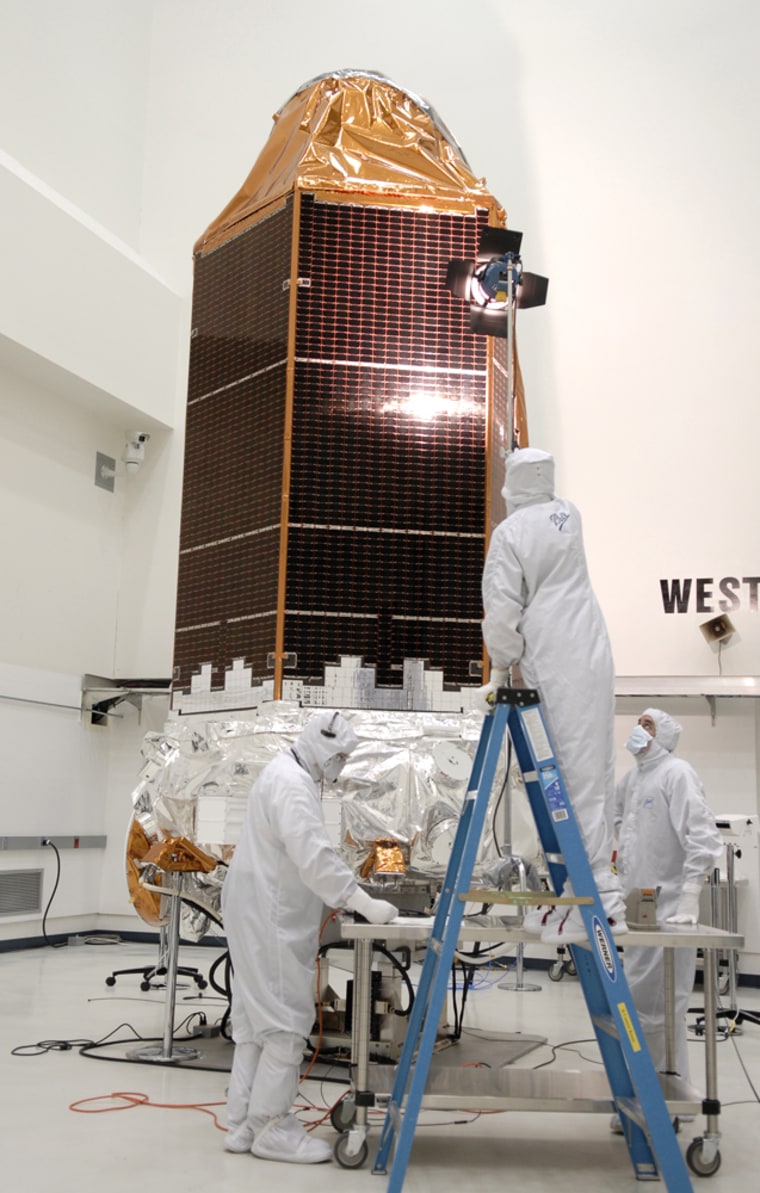NASA unveiled a modest telescope on Friday with a sweeping mission — to discover if there are any Earth-type planets orbiting distant stars.
Though astronomers have found more than 330 planets circling stars in other solar systems, none has the size and location that is believed to be key to supporting life.
"A null result is as important as finding planets," Michael Bicay, director of science at NASA's Ames Research Center in California, told reporters in Titusville, Florida, where the Kepler telescope is being prepared for launch.
Named after the 17th century astronomer who figured out the motions of planets, Kepler is scheduled for liftoff on March 5 aboard an unmanned Delta 2 rocket from the Cape Canaveral Air Force Station.
Once in position trailing Earth in orbit, Kepler will spend at least 3 1/2 years focused on a star-rich patch of sky between the constellations Cygnus and Lyra.
Equipped with a 95 megapixel camera -- the largest ever flown in space -- Kepler will attempt to find Earth-sized planets flying across the face of their parent stars.
Scientists say it will be a bit like trying to spot a gnat in the glare of a floodlight.
To an outside observer, a planet as large as Jupiter temporarily blots out about 1 percent of visible light from the sun as it makes its transit. Passage of Earth-like worlds produce a change in brightness of about 84 parts in a million.
Slideshow 12 photos
Month in Space: January 2014
"This is a very small signal and it's very difficult to predict," said James Fanson, Kepler project manager at the U.S. space agency's Jet Propulsion Laboratory in Pasadena, California. "The plan is to stare at this place for three years and wait for the stars to wink."
Kepler will need to keep extraordinarily still for weeks at a time, breaking its gaze only once a month for 12-hour radio linkups with Earth.
Data from 170,000 target stars will be relayed for scientists on the ground to analyze.
The selected stars are just a fraction of the estimated 4 million objects that will fall within Kepler's view, but scientists want to maximize the telescope's observing time to make sure they catch as many blinking stars as possible.
To find a planet like Earth, scientists will need to catch at least four transits, a process that will take about 3 1/2 years. Ground-based telescopes will be used to verify results.
"There's several astrophysical phenomena that masquerade as planets," Bicay said. "We're going to have to sort them out."
No one knows how many stars have solid-body planets like Earth orbiting in what are called habitable zones, places where liquid water can exist.
Water is believed to be crucial for life, although that evidence is based on a sample of one -- Earth.
"We're privileged to live in a time and in a country that has the technology to answer these questions scientifically," said Fanson.

